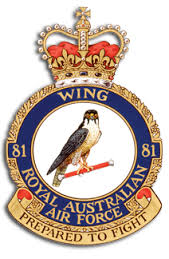Information
-
Document No.
-
Audit Title
-
Client / Site
-
Conducted on
-
Prepared by
-
Location
Details
-
Aircraft Tail Number: (Hornet: A21-nnn / Hawk: A27-nn / PC-9: A23-nnn / Super Hornet: A44-nnn)
-
-
Task:
-
-
Auditor/s:
Add Auditor's Name:
-
Auditor Name:
-
Position:
1. Aircraft Documentation
-
a. Applicable entries into aircraft documentation are made (unserviceabilities)
-
b. Appropriate certification level entered into aircraft documentation (FOC/IMI)
-
Comments:
2. Authorisations
-
a. Will more than one TNCO be employed for the conduct of the task?
Tap to enter information
-
How is it determined who will be the Maintenance Certifier if more than one TNCO is conducting task? Comment:
-
b. TNCO checks if personnel are authorised to conduct task prior to starting task.
-
c. TNCO determines if any Tradespersons are conducting task under Mentor.
-
d. IMI/II, TNCO and Tradespersons conducting task are authorised in their RTE.
Team
-
Rank / Name / PMKeys:
-
Role: (T/man, trade supervisor, II, MM)
-
Authorised?
-
Comments:
3. Publications
-
a. Relevant publications are obtained
-
b. Publications are complete, up to date, and applicable to the task?
-
c. Copies of publications and data are marked Uncontrolled and Dated
-
Comments:
4. Tools and GSE
-
a. CTKs used during the task are U/S'd in the aircraft documentation.
-
b. CTKs are checked prior to use to ensure no tools are missing.
-
c. Tool control procedures are used correctly (tools tagged etc.
-
d. Tools and GSE are checked for serviceability prior to use (Cal, Serv tags, etc.
-
Comments:
5. Aeronautical Product
-
a. Relevant publication used to identify correct part numbers.
-
b. ADAASS used to identify parts are authorised to fit.
-
c. Check for documentation attached to parts (Trav tag, Serv tag, C of C, etc).
-
d. Ensure parts have been certified serviceable on documentation.
-
e. CAMM2 checked for outstanding MODS/STIs, life of item and builds check.
-
f. Details on the part, packaging and documentation checked for matching details.
-
g. Physical characteristics checked for consistency with the item being replaced.
-
h. Parts checked for damaged or deterioration of condition.
-
i. Consumables checked and are within marked shelf life (goops, O-rings, etc).
-
Comments:
6. Safety
-
a. All safety precautions stated in publications are followed.
-
b. MSDS sheets checked for hazardous substances used.
-
c. Applicable precautions stated in MSDS are followed.
-
d. Applicable PPE is worn.
-
e. PPE used is serviceable.
-
Comments:
7. Conduct of Maintenance
-
a. Publications are referenced and followed throughout task.
-
b. Tools and GSE are used properly.
-
c. OH&S requirements are observed.
-
d. Relevant PPE is used.
-
e. Tradespersons do not proceed past inspection points until authorised to do so.
-
f. Correct level of supervision used (Mentored personnel directly supervised).
-
g. Progressive inspections are carried out when required.
-
h. FOC/IMI/II inspections carried out when required.
-
i. TNCO does not become involved in 'hands on' work.
-
j. Independent inspector remains independent of the task.
-
Comments:
8. Maintenance Certification
-
a. Certification makes reference to applicable publication.
-
b. Tradespersons certification made by person who did the 'hands on' work.
-
c. Trade Supervisor certification made by TNCO supervising task.
-
d. FOC/IMI/II certification made by person who conducted the inspection.
-
e. Maintenance Identification Numbers entered next to all signatures.
-
f. Certification made within required timeframes.
-
g. Record of component changes completed correctly.
-
h. CAMM2 work completed and Job Number entered in documentation.
-
i. CFU and ASI sheets checked and adjusted if affected by task.
-
j. Errors made in documentation corrected and properly certified.
-
Comments:
9. Completion of Task
-
a. CTK’s used during task cleared and signed for in aircraft documentation.
-
b. Appropriate tags attached to U/S items (Trav tags, U/S tags, etc).
-
c. U/S repairable parts returned to repair pipeline.
-
d. U/S non-repairable and consumable parts disposed of appropriately.
-
e. Used PPE is disposed of appropriately.
-
f. Hazardous substance waste disposed of appropriately.
-
g. Work area cleaned (FOD removed from work stands, CTK’s, etc).
-
Comments:
10. Overall Comments, Cars Raised, Observations & Recommendations
-
Comments:








